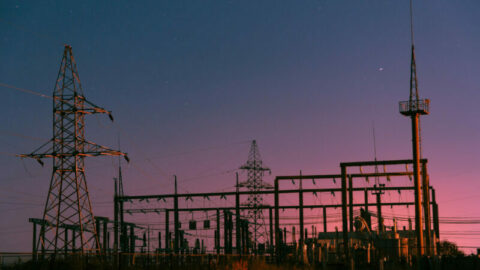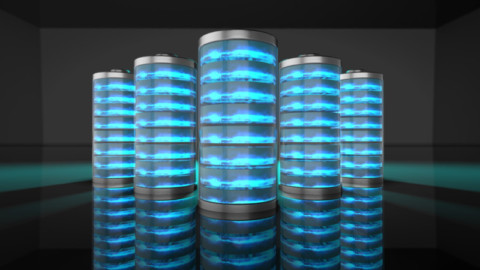by Imogen Hartmann, Assistant Editor, Energy Magazine
Renewables are a hot topic in the Australian energy industry as the sector evolves and transforms. Australia’s abundant natural resources means a slew of potential for renewable energy, but moving from potential to delivery can be challenging. Here, we take a look back at Australia’s energy past, consider our potential, and look at some of the clean energy projects delivering big results around the country.
With Australia being a member of the 2016 Paris Agreement, energy makes up a big component of the federal interest in meeting carbon emissions commitments.
However, renewable energy still only accounts for a small percentage of Australia’s total energy production and consumption.
In 2019, total electricity generation in Australia was estimated to be 265,117 gigawatt hours (GWh), and fossil fuel sources contributed 209,636 GWh (79 per cent) to this total.
Coal accounted for the majority of electricity generation, at 56 per cent of total generation in 2019. Renewable sources contributed 55,481 GWh (21 per cent) of total electricity generation in 2019, an increase of 12 per cent compared with 2018.
Historically, much of Australia’s energy needs have been met by fossil fuels because of the abundance of these low-cost coal resources, which have underpinned some of the cheapest electricity in the world. But times are changing.
Recently, in a study providing estimates of the cost to generate electricity from new power plants, AEMO and the CSIRO concluded that wind and solar are clearly the cheapest new form of electricity generation.
These findings held true even while acknowledging the need to factor storage into new wind and solar projects. Even when variable renewables are backed up with two or six hours of battery or pumped hydro storage, the renewable generators were able to undercut their competitors.
Our fossil fuel history
Black and brown coal can be found throughout the country, with the most significant black coal resources located in the Bowen-Surat (Queensland) and Sydney (New South Wales) basins.
Australia’s annual thermal and metallurgical coal exports are worth more than $40 billion, mainly to Japan, India, European Union, Republic of Korea and Taiwan, making it one of Australia’s largest commodities.
The Gippsland Basin in Victoria holds most of Australia’s very large brown coal resources, where it is primarily used for electricity production. Current rates of production indicate that there are nearly 500 years of brown coal resources remaining.
Meanwhile, the Carnarvon, Browse and Bonaparte basins off the north-west coast house a significant amount of Australia’s large conventional gas resources.
There are also smaller resources in the Gippsland Basin offshore Victoria and the onshore Cooper-Eromanga Basin in South Australia. EDR of conventional gas is adequate at current levels of production for around 60 years.
Coal seam gas (CSG) resources are growing due to increased exploration, with the Bowen, Surat and Sydney basins being identified for their significant economic demonstration of resources, in addition to the major coal basins of Eastern Australia.
Though small by world standards, Australia’s crude oil resources, found largely in the Carnarvon and Gippsland basins, are bolstered by significant condensate and LPG resources associated with the major largely undeveloped gas fields in the Carnarvon, Browse and Bonaparte basins off the north-west coast of Western Australia.
There are still a number of sedimentary basins yet to be assessed.
The driving force of renewables
Currently, renewable energy sources make up small proportions of Australia’s electricity generation. Of the 21 per cent of Australia’s total electricity generation that comes from renewable energy sources, seven per cent comes from wind, seven per cent also comes from solar, and hydropower contributes five per cent.
The share of renewables in total electricity generation in 2019 was the highest since levels were first recorded in the early 1970s.
In addition to the major contributors, Australia is also home to a variety of other renewable energy sources including geothermal, bioenergy, ocean/wave power and hydrogen, which is expected to both play a major role in Australia’s future energy mix, as well as becoming a significant export for the country.
With wind, solar and hydropower being Australia’s most common forms of renewable energy, wind is the most widespread, solar is the most well-known, and hydropower is the oldest form of renewable generation.
Wind power
Wind power is electricity generated by wind turning the propeller-like blades of a turbine around a rotor, which spins a generator, which creates electricity.
Commonly, wind turbines are located on hilltops or near the ocean – with some wind turbines being built in the ocean, either floating on the surface or using large pylons extending to the seafloor.
The windmill shape is the most common, although this can vary and is often being tested and adjusted across the world.
Thanks to several new projects commissioned in 2019, wind energy overtook hydro power as the leading source of renewable energy for the first time ever.
The cumulative installed capacity of wind energy in Australia has been steadily growing, and has more than tripled since 2010.
Wind is one of the lowest-cost sources of new electricity supply in Australia, and with the cost of utility-scale wind energy expected to continue to fall, new wind farms are expected to continuously deliver cheaper electricity.
Solar power
Solar energy is produced from the heat and light of the sun, which is then converted into electricity or used to heat air, water or other substances. Solar energy can also be used to create solar fuels such as hydrogen.
The process of harnessing solar power can be divided into two types: solar photovoltaic (PV) and solar thermal.
Solar PV uses a technology called a semiconductor cell or a solar PV cell to convert sunlight directly into electricity.
A common form of solar PV is solar panels, where the PV is typically encased in glass and an aluminium frame. One or more panels can be installed to power a single light, cover the roof of a house for residential use, or be assembled into a large-scale solar farm generating hundreds of megawatts of electricity.
Solar thermal energy is when sunlight is converted into heat (thermal energy), which can be used for a variety of purposes, including creating steam to drive an electricity generator. A refrigeration cycle can also be derived from heat energy to produce solar-based cooling.
The two main types of solar thermal technologies include:
- Small-scale thermal technology used for space heating or to heat water (such as in a solar hot water system)
- Large-scale power generation using a field of mirrors to reflect sunlight onto a receiver, which shifts the heat to a thermal energy storage system, where the energy can then be released from storage as required.
Hydropower
Moving water (usually from a dam or reservoir) being converted into energy is called hydropower. The electricity is produced as the water is passed through an electricity generator known as a turbine, which drives the generator to convert the motion into electrical energy.
Hydropower is one of the oldest and most mature energy technologies, having been used in various forms for thousands of years, and provides some level of electricity generation in more than 160 countries.
Pumped hydro energy storage (PHES) is an emerging form of hydropower which differs in that it uses two dams, with one higher than the other.
Water can then be pumped from the lower dam into the higher one when demand for energy is low, so that excess energy from the grid, or wind or solar farms, can be stored until the energy is required.
This process can be reversed by returning the water to the lower dam using a hydroelectric turbine, aided by gravity, releasing the stored energy.
The generation of hydroelectricity in this manner is almost immediate, and is available to be fed into the grid quickly when demand for electricity spikes.
Renewables around the nation
Because of Australia’s diverse landscape and ecosystem, the spread of generation from different renewable types differs from state-to-state, depending on what’s most available and accessible.
Western Australia
A recent 20-year forecast of Western Australia’s power system indicated a huge increase in renewable generation.
The modelling anticipated there would be a strong uptake in wind power and that rooftop solar would continue to displace traditional forms of generation.
Current renewable projects and achievements include:
» The 132MW Merredin Solar Farm in the Wheatbelt region – the state’s largest operating PV project.
» The 180MW Warradarge Wind Farm, near Eneabba, with 51 turbines– among the largest in Western Australia with a tip height of 152m, sporting some of the longest blades onshore at 66.6m.
» The $39.87 million Perth Wave Energy Project – the world’s first commercial-scale wave energy array that is connected to the grid and has the ability to produce desalinated water.
» The $495 million East Rockingham Waste-to-Energy project, recovering energy from 330,000 tonnes of residual waste per annum to produce 28.9MW of power.
» The Asian Renewable Energy Hub, a large-scale wind and solar hybrid renewable energy project near Port Hedland.
South Australia
South Australia leads the nation in terms of renewable energy commercialisation and potential. It is home to some of the windiest and sunniest places in Australia, and current Energy Minister Dan van Holst Pellekaan has set himself a goal of getting the state to its ambitious target of net 100 per cent renewable electricity before 2030.
Current renewable projects and achievements include:
» The Lincoln Gap Wind Farm, which will ultimately consist of 464MW of wind turbines.
» South Australia’s Virtual Power Plant (SA VPP) – the largest virtual power plant in the country.
» Hydrogen Park South Australia (HyP SA) – Australia’s largest renewable hydrogen project.
» A hybrid wind and solar plant on the cards at Port Augusta Renewable Energy Park.
» A record supply of 100 per cent of the state’s energy needs by solar power for one hour on 11 October 2020, using the state’s 288,000 PV rooftop systems to provide 992MW and large- scale solar 313MW.
Tasmania
Tasmania has a plan to become a global renewable energy powerhouse with a renewable energy target which would see the state double its renewable energy generation by 2040.
Tasmania has also long been seen as the home of hydropower, with an extensive network of hydroelectric dams across the state.
Current renewable projects and achievements include:
» Project Marinus, a 1,500MW second undersea interconnector that would help deliver renewable energy from Tasmania to Victoria to help stabilise the national grid.
» Battery of the Nation, a nation-leading pumped hydro storage facility.
» The 5MW George Town Solar Farm, which will be Tasmania’s first large-scale solar farm.
» The 12.5MW Wesley Solar Farm, which will be Tasmania’s largest solar farm.
Northern Territory
With so many of the Northern Territory’s communities living remotely, reliable off-grid energy sources are critical for the state to bring power to the residents. This is why local and remote solar systems are one of the more commonly utilised renewable energy sources in the Territory.
Current renewable projects and achievements include:
» The $59 million NT Solar Energy Transformation Program (SETuP), which deployed medium and high penetration renewable energy systems to 26 remote communities.
» Northern Territory Government solar and battery stimulus packages for the purchase and installation of solar PV
systems with batteries and for adding batteries to existing systems.
Victoria
The Victorian Government is focused on increasing the penetration of renewables in the state, and recently increased the Victorian Renewable Energy Target (VRET) to 50 per cent by 2030.
Current renewable projects and achievements include:
» In September, the Victorian Government announced the second round of the VRET Auction, testing the capacity of industry to deliver at least a further 600MW of renewable energy.
» The expansion of Victoria’s Solar Homes program, allowing eligible landlords to apply for an interest-free loan in
addition to the existing rebate available.
» A $15.3 million package of renewable energy investments to help reduce the state’s emissions, including $10.3 million for energy efficiency and affordability improvements, including solar installations on public buildings on crown land; $4 million to fund energy efficiency upgrades for hot water systems and lighting in public housing high-rise properties across Victoria; and $1 million in grants to help regional communities deliver renewable energy projects.
New South Wales
NSW is a leader in the development of large-scale solar projects. These solar farms support jobs and investment in regional NSW, help to diversify the state’s energy mix and drive down costs for future large-scale solar developments.
There are already 16 major operating large-scale solar farms in NSW, and current renewable projects and achievements include:
» The development of three Renewable Energy Zones, including an 8,000MW zone in New England and a 3,000MW
zone in Central-West Orana.
» A state-government set target of up to ten per cent hydrogen in gas networks by 2030.
Queensland
Home to abundant sunshine, it’s little wonder that Queensland has invested heavily in solar energy infrastructure for the state.
Current renewable projects and achievements include:
» The development of three Queensland Renewable Energy Zones located in southern, central and northern Queensland, for which the government has allocated $145 million.
» The Western Downs Green Power Hub near Chinchilla, 250km north-west of Brisbane. At a size of 460MW of installed solar panels once built, it will be Australia’s largest operating solar farm. The site also holds up to 150MW battery energy storage potential.
» The construction of a new wind farm in Warwick, the state’s first publicly-owned new renewable energy generation in 20 years.
Australian Capital Territory
With one of Australia’s most progressive governments, the ACT is making waves when it comes to the development of its renewables scene.
Since January 2020, the territory has been powered by 100 per cent renewable energy, which is achieved through a combination of sourcing renewable energy from other states, as well as generating its own clean energy within the territory.
Current renewable projects and achievements include:
» Evoenergy’s Ginninderry Residential Battery Trial, which will provide subsidised residential batteries for up to 75 homes in Ginninderry in Stage 1A. The project has been designed to explore how small-scale solar and batteries interact with local electrical infrastructure in areas of 100 per cent solar uptake.
» The ACT Labor Government has committed to building a 250MW battery system if re-elected, which would be one of the biggest battery storage systems in Australia.


















